Editor's Picks
Open Access
Review
Pathogenesis and management of atopic dermatitis: insights into epidermal barrier dysfunction and immune mechanisms
Atopic dermatitis (AD) is a chronic inflammatory skin disease characterized by a compromised epidermal barrier and heightened immunoglobulin E (IgE) levels, often associated with filaggrin (FLG) gene mutations. Genetic factors like FLG mutations and environmental influences, including microbial exposure and pollutants, contribute to the disease’s progression, leading to itchy, inflamed skin. AD frequently coexists with allergic conditions, severely affecting the quality of life. The disease’s pathogenesis involves complex interactions between genetic predispositions, immune responses, and environmental triggers. Despite advances, the development of effective treatments remains challenging due to an incomplete understanding of how FLG mutations influence immune pathways and the variability in AD presentation. Current biomarkers are insufficient to fully capture disease complexity or predict therapeutic responses, highlighting the need for novel biomarkers and personalized approaches. Emerging therapies such as chimeric antigen receptor (CAR)-T cell therapy, stem cell therapy, and regenerative medicine show promise in addressing AD’s root causes. This review explores key aspects of AD pathogenesis, focusing on epidermal barrier dysfunction, immune mechanisms, and the need for innovative therapeutic strategies to improve patient outcomes.
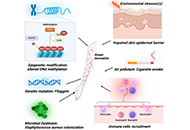
Open Access
Review
The impact of occupational exposures on chronic rhinosinusitis: a scoping review
Chronic rhinosinusitis (CRS) is a prevalent and burdensome condition worldwide, characterized by inflammation of the paranasal sinuses. Ideally, instead of treating CRS, we would identify ways to prevent the development of this chronic condition. Occupational exposures may be an excellent target for prevention. Occupational exposures have been shown to play a critical role in the pathogenesis of multiple lower airway diseases, such as asthma, silicosis, asbestosis, and hypersensitivity pneumonitis. However, evidence for the association between occupational exposures and the development of upper airway disease, like CRS, is less well-defined. This manuscript examines the association between occupational exposures and CRS. A scoping review of the literature following Preferred Reporting Items for Systematic Reviews and Meta-Analyses (PRISMA) guidelines identified 19 relevant studies. The populations examined and the methods and criteria used for defining CRS diagnosis and occupational variables significantly varied between the studies. Diagnosis of CRS was most often determined by self-reported symptoms or medical record review. Occupational variables ranged from employment status to occupation type to specific exogenous compounds encountered. Overall, substantial evidence demonstrates a general association between occupational exposures and CRS diagnosis; however, limitations in study methodologies, including variations in CRS diagnostic criteria, occupational exposures, assessment methods, and populations, hinder drawing more specific conclusions. Moving forward, rigorous research methodologies and standardized criteria are essential to draw conclusions supported by multiple studies. Critical components of future studies should include large, diverse populations, use of consensus CRS diagnostic criteria, and inclusion of many specific and quantitatively defined exposures. Ultimately, such efforts can help inform preventative measures and interventions for CRS, thus mitigating the burden of CRS on individuals and populations worldwide.
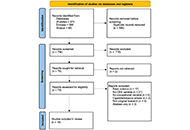
Open Access
Review
Management of asthma using probiotics
Asthma is one of the most common respiratory diseases in humans throughout the world. The illness continues to be the most prevalent cause of respiratory morbidity and affects both adults and children. Asthma is mainly caused by microbes, especially the species of Aspergillus. It causes continuous irritation and distracts the mental attention of the patient, leading to physical weakness and depression resulting in immune-compromised conditions. Asthmatic patients need careful attention and continuous treatment. Taking into account its major effects on patients’ quality of life, the challenging nature of the therapy, and side effects of the novel therapeutic strategies that influence the clinical course of asthma are required to be considered before finally deciding the course of treatment. Children with asthma and wheezing are frequently sustained by a type-2 immune response. In addition, people with wheezing and asthma can be identified by the presence of digestive and respiratory tract dysbiosis. Therefore, oral probiotics could be used as an additional asthmatic medication to manage asthma, but the decision should be constantly monitored by specialized persons. During the last two decades, the importance of probiotics in the treatment of various ailments has been realized and several researches are being conducted to find out the impact of healthy gut microbiome on the management of various diseases including asthma.
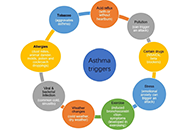
Articles
Latest
Most Viewed
Most Downloaded
Most Cited
Open Access
Systematic Review
Ensuring patient safety: a closer look at glucocorticoid therapy in COPD and asthma
Alexandru Corlateanu, Cristina Toma
Published: December 22, 2025 Explor Asthma Allergy. 2025;3:1009104
This article belongs to the special issue The Era of Biologics in Allergy
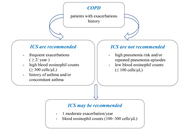
Open Access
Review
Beyond the airways: asthma as a systemic disorder
Silvina Monica Alvarez ... Nidia Noemi Gomez
Published: December 11, 2025 Explor Asthma Allergy. 2025;3:1009103
This article belongs to the special issue Asthma and its Relationship with Psychological and Psychopathological Factors
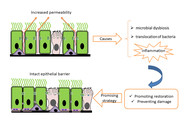
Open Access
Commentary
Combined intranasal treatment for allergic rhinitis: an option for children under 12 years of age
Alberto Vidal, Pedro Cortez
Published: December 01, 2025 Explor Asthma Allergy. 2025;3:1009102
This article belongs to the special issue Asthma, Allergies, and Respiratory Infections in Pediatric Age
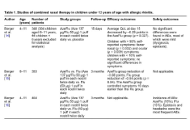
Open Access
Original Article
Clinical and autoimmune characteristics associated with angioedema in patients with chronic spontaneous urticaria
Vesna Trajkova ... Kristina Trpcheva Stojkov
Published: December 01, 2025 Explor Asthma Allergy. 2025;3:1009101
This article belongs to the special issue Bridging Experimental and Translational Allergology
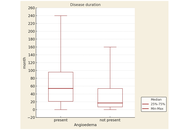
Open Access
Case Report
Multidimensional super-response to omalizumab in a patient with N-ERD: 9-year follow-up of a case report
Edyta Jura-Szołtys ... Radosław Gawlik
Published: November 21, 2025 Explor Asthma Allergy. 2025;3:1009100
This article belongs to the special issue Update on Chronic Rhinosinusitis
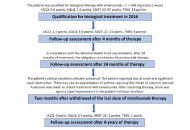
Open Access
Case Report
A rare complication in Schnitzler syndrome: recall urticaria in a patient treated with anakinra—a case report
Christian Paolo Ratti ... Silvia Mariel Ferrucci
Published: November 13, 2025 Explor Asthma Allergy. 2025;3:100999
This article belongs to the special issue The Era of Biologics in Allergy
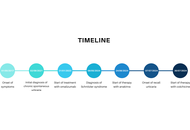
Open Access
Review
A mini-update on chronic rhinosinusitis
Sepideh Darougar ... Pantea Bozorg Savoji
Published: September 19, 2024 Explor Asthma Allergy. 2024;2:473–484
This article belongs to the special issue Update on Chronic RhinoSinusitis
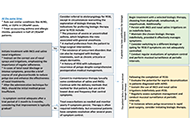
Open Access
Review
Current approach to moisturizer and emollient utilization in atopic dermatitis: a review
Serap Maden
Published: August 27, 2024 Explor Asthma Allergy. 2024;2:441–449
This article belongs to the special issue Atopic Dermatitis – Pathology and Treatment modalities
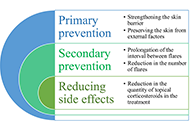
Open Access
Review
Maternal RSV vaccination to protect infants: current evidence and future directions
Malik Sallam ... Mohammed Sallam
Published: July 30, 2025 Explor Asthma Allergy. 2025;3:100988
This article belongs to the special issue Asthma, Allergies, and Respiratory Infections in Pediatric Age
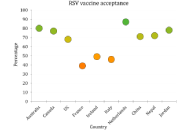
Open Access
Review
Multiple chemical sensitivity: a review of its pathophysiology
Cătălina Elena Lavric ... Frédéric de Blay
Published: July 29, 2024 Explor Asthma Allergy. 2024;2:350–362
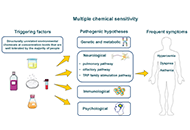
Open Access
Review
Pathogenesis and management of atopic dermatitis: insights into epidermal barrier dysfunction and immune mechanisms
Antara Baidya, Ulaganathan Mabalirajan
Published: February 07, 2025 Explor Asthma Allergy. 2025;3:100973
This article belongs to the special issue Atopic Dermatitis – Pathology and Treatment modalities

Open Access
Review
Management of asthma using probiotics
Amar P. Garg ... Bajeerao Patil
Published: February 20, 2024 Explor Asthma Allergy. 2024;2:9–32
This article belongs to the special issue Asthma and its Relationship with Psychological and Psychopathological Factors

Open Access
Review
Current approach to moisturizer and emollient utilization in atopic dermatitis: a review
Serap Maden
Published: August 27, 2024 Explor Asthma Allergy. 2024;2:441–449
This article belongs to the special issue Atopic Dermatitis – Pathology and Treatment modalities

Open Access
Review
Pathogenesis and management of atopic dermatitis: insights into epidermal barrier dysfunction and immune mechanisms
Antara Baidya, Ulaganathan Mabalirajan
Published: February 07, 2025 Explor Asthma Allergy. 2025;3:100973
This article belongs to the special issue Atopic Dermatitis – Pathology and Treatment modalities

Open Access
Review
A mini-update on chronic rhinosinusitis
Sepideh Darougar ... Pantea Bozorg Savoji
Published: September 19, 2024 Explor Asthma Allergy. 2024;2:473–484
This article belongs to the special issue Update on Chronic RhinoSinusitis

Open Access
Review
New therapeutic approaches with biological drugs for eosinophilic granulomatosis with polyangiitis
Alejandra Carrón-Herrero ... Giovanni Paoletti
Published: June 08, 2023 Explor Asthma Allergy. 2023;1:31–48
This article belongs to the special issue The Era of Biologics in Allergy
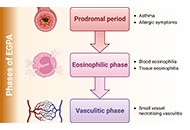
Open Access
Review
Multiple chemical sensitivity: a review of its pathophysiology
Cătălina Elena Lavric ... Frédéric de Blay
Published: July 29, 2024 Explor Asthma Allergy. 2024;2:350–362

Open Access
Review
Update on the diagnosis of severe asthma in children and adolescents
Alberto Vidal
Published: January 10, 2025 Explor Asthma Allergy. 2025;3:100965
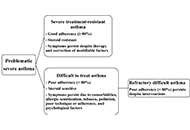
Open Access
Review
Exploring the therapeutic potential of algae derived food and diet factors in allergy and inflammation
Leonel Pereira, Ana Valado
Published: April 23, 2024 Explor Asthma Allergy. 2024;2:127–147
This article belongs to the special issue The Different Faces of Food Allergy

Open Access
Review
Multiple chemical sensitivity: a review of its pathophysiology
Cătălina Elena Lavric ... Frédéric de Blay
Published: July 29, 2024 Explor Asthma Allergy. 2024;2:350–362

Open Access
Review
New therapeutic approaches with biological drugs for eosinophilic granulomatosis with polyangiitis
Alejandra Carrón-Herrero ... Giovanni Paoletti
Published: June 08, 2023 Explor Asthma Allergy. 2023;1:31–48
This article belongs to the special issue The Era of Biologics in Allergy

Open Access
Letter to the Editor
Impact of the standardization unit’s definition on the in vitro biological potency of allergen extracts
Thierry Batard ... Laurent Mascarell
Published: August 27, 2023 Explor Asthma Allergy. 2023;1:107–114

Open Access
Review
Small airway dysfunction and obesity in asthmatic patients: a dangerous liaison?
Jack Pepys ... Marcello Cottini
Published: August 15, 2023 Explor Asthma Allergy. 2023;1:73–88
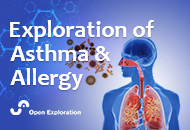
Open Access
Mini Review
Food allergy as one of the faces of primary immunodeficiency
Polina Kostova ... Guergana Petrova
Published: February 29, 2024 Explor Asthma Allergy. 2024;2:65–75
This article belongs to the special issue The Different Faces of Food Allergy

Special Issues
Ongoing Special lssues
Completed Special lssues
Allergic Asthma - New Insights
Guest Editors: Prof. Bernard Ryffel; Dr. Peter Cook; Prof. Dieudonnée Togbe
Submission Deadline: May 31, 2026
Published Articles: 0
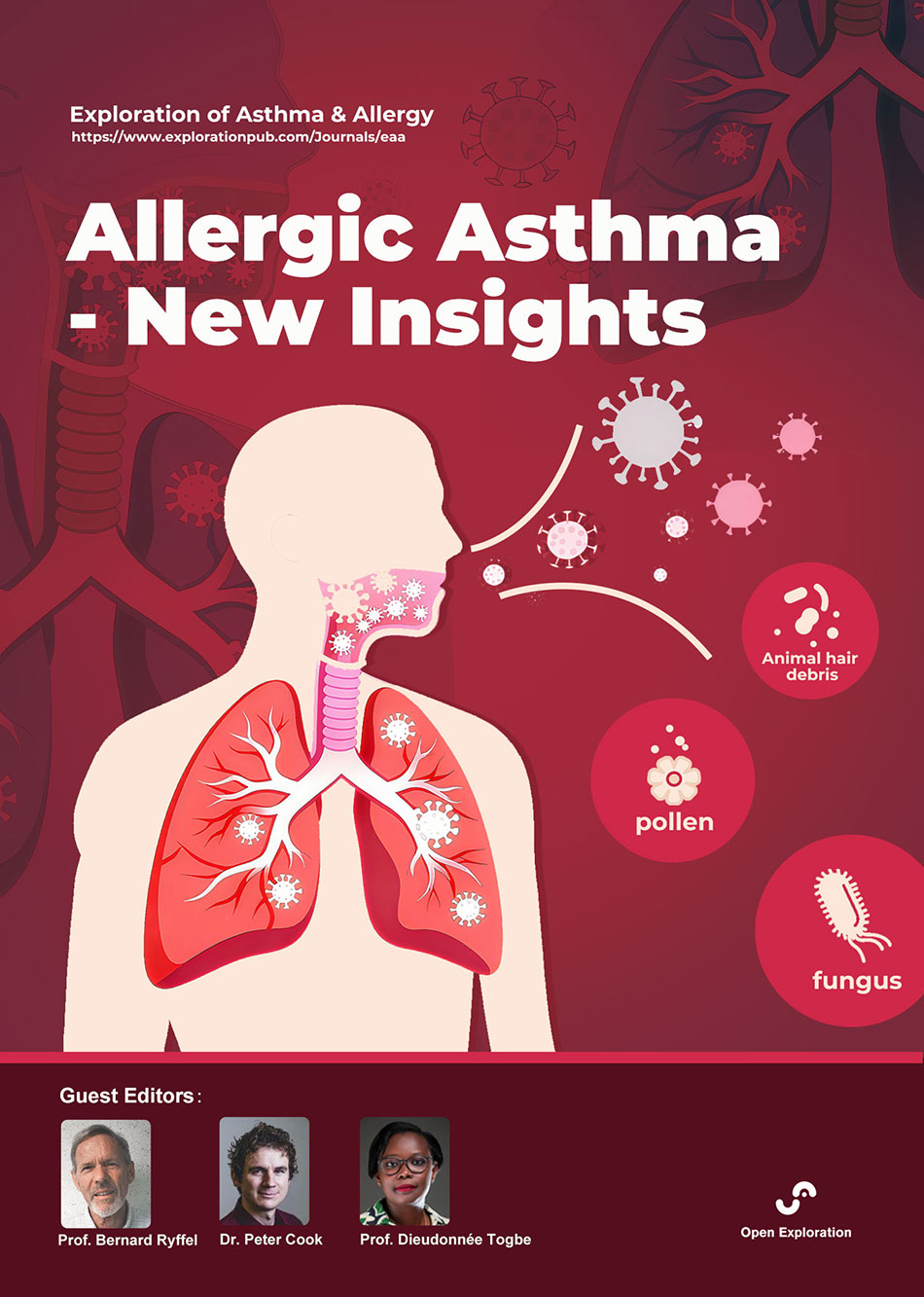
The Complex Interactions Between Lifestyles and Asthma
Guest Editor: Dr. Manlio Milanese
Submission Deadline: December 31, 2025
Published Articles: 0

Allergy and Asthma in the Digital Age
Guest Editors: Prof. Juan Carlos Ivancevich; Prof. Ivan Cherrez-Ojeda
Submission Deadline: December 31, 2025
Published Articles: 1
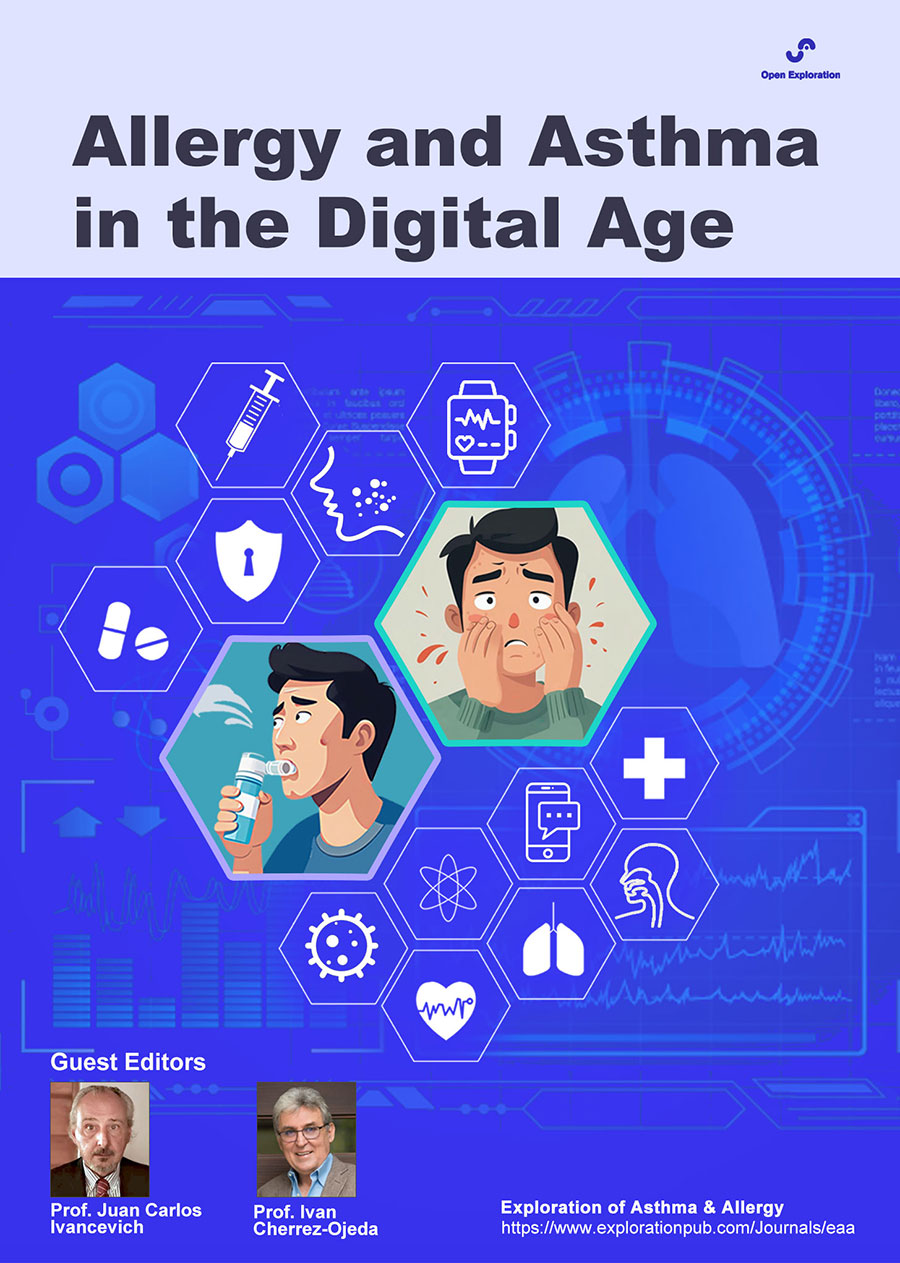
Bridging Experimental and Translational Allergology
Guest Editors: Prof. Torsten Zuberbier; Dr. Katarina Stevanovic
Submission Deadline: April 30, 2026
Published Articles: 1

Climate Change, Allergy, and Immunotherapy
Guest Editor: Dr. Laurent Mascarell
Submission Deadline: December 31, 2026
Published Articles: 3
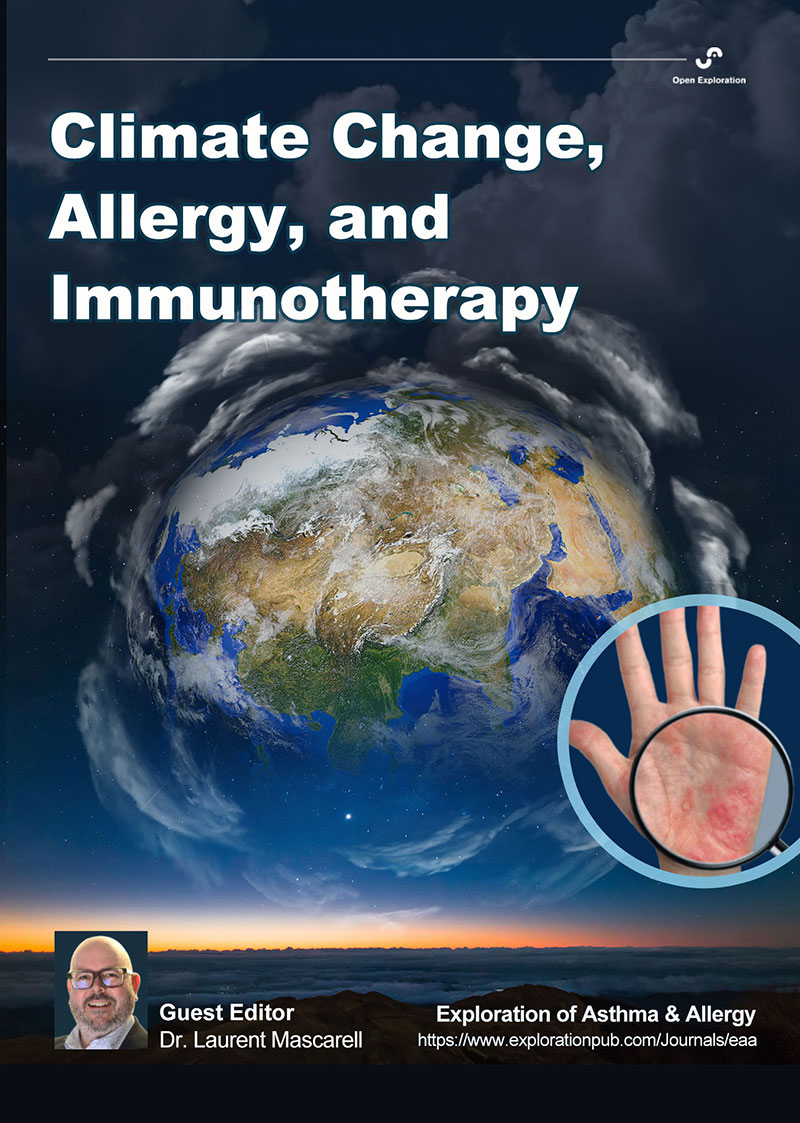
Practical Issues in Pediatric Allergy
Guest Editors: Prof. Nelson A. Rosario Filho; Prof. Herberto J. Chong Neto
Submission Deadline: December 31, 2025
Published Articles: 0
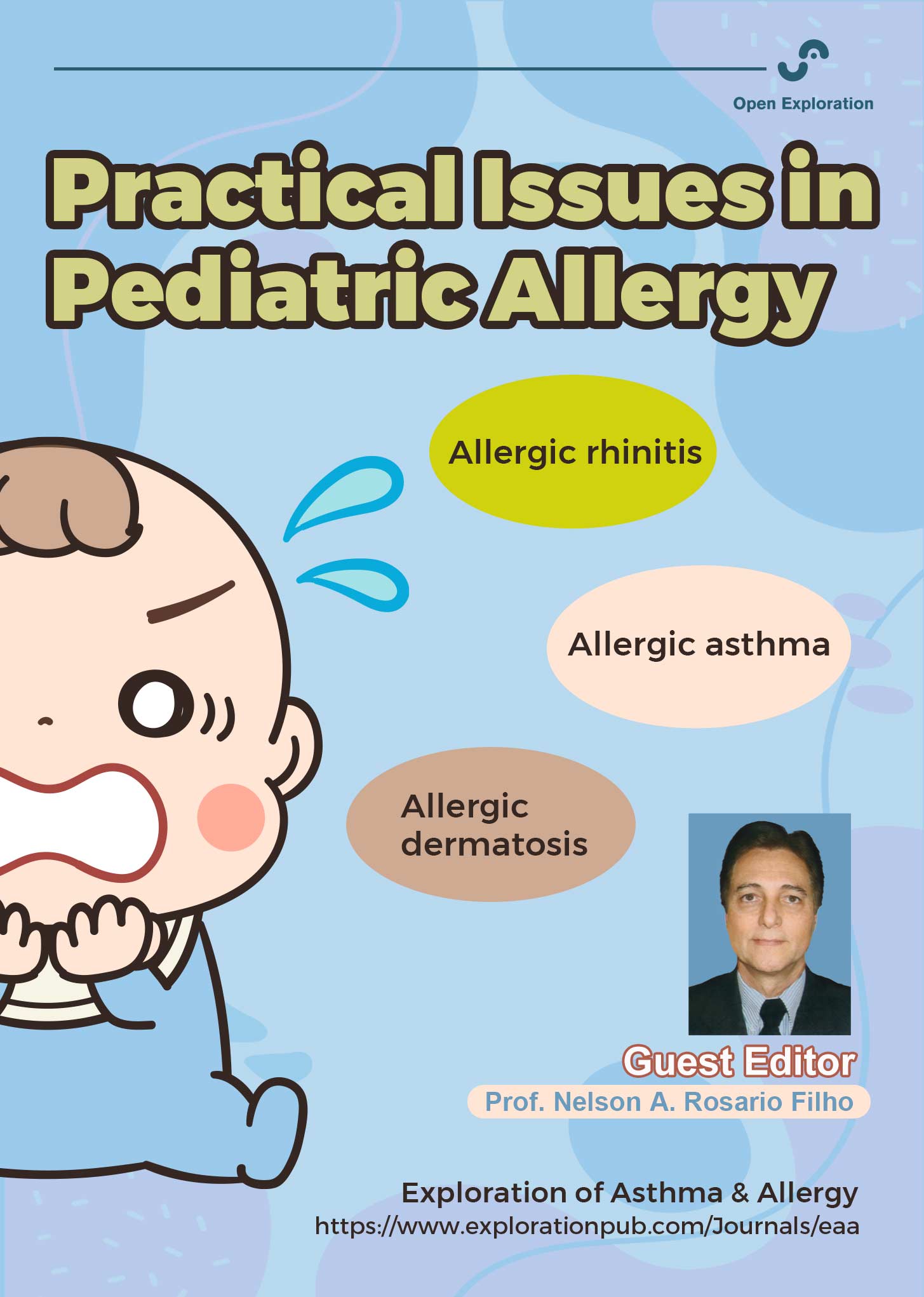
Asthma, Allergies, and Respiratory Infections in Pediatric Age
Guest Editors: Prof. Michele Miraglia del Giudice; Dr. Cristiana Indolfi; Dr. Angela Klain; Dr. Giulio Dinardo
Submission Deadline: December 31, 2025
Published Articles: 4
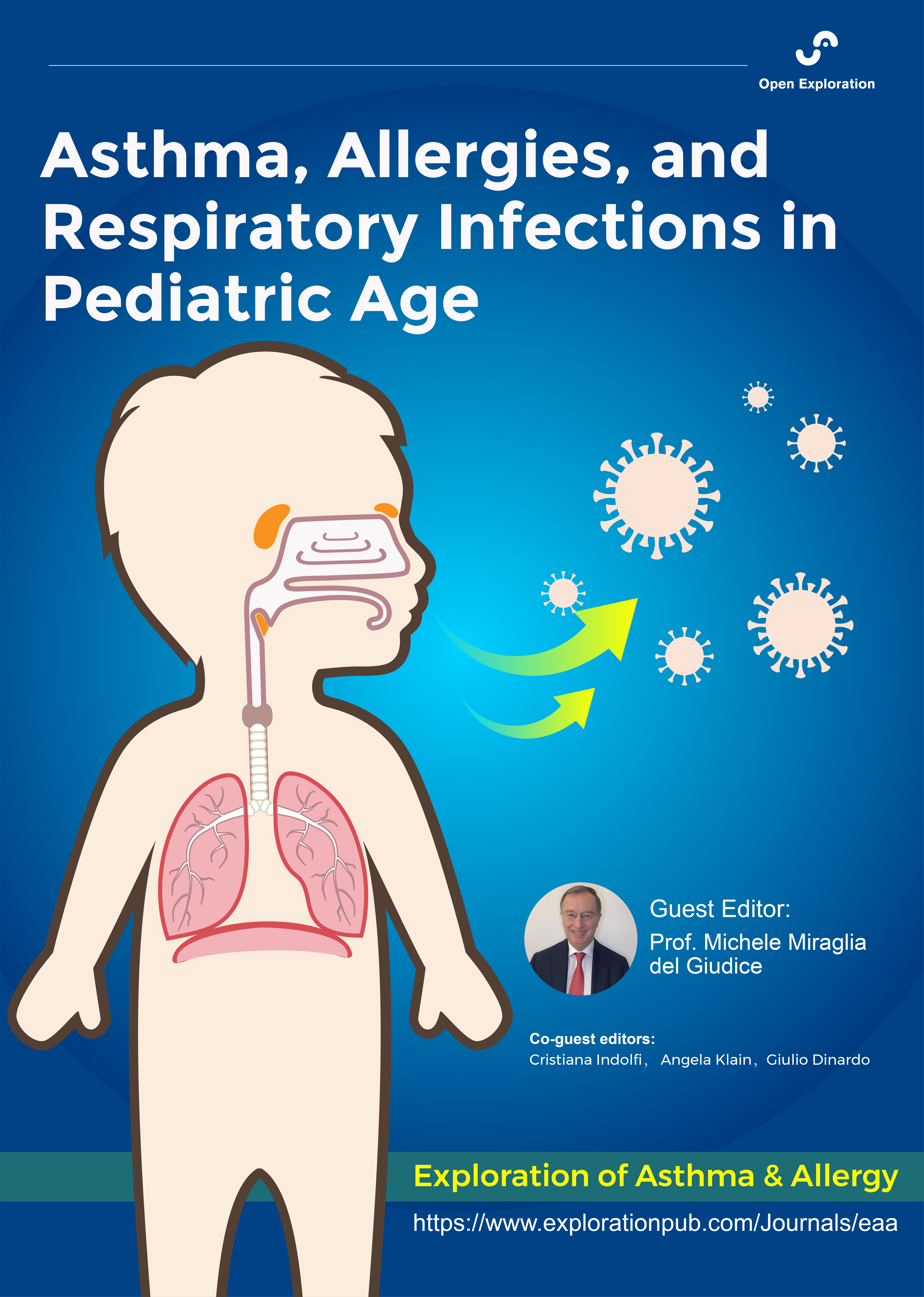
Beyond Eosinophilic Gastrointestinal Diseases: Pathogenetic Mechanisms and Therapeutic Strategies
Guest Editor: Dr. Eleonora Nucera
Submission Deadline: December 31, 2025
Published Articles: 2
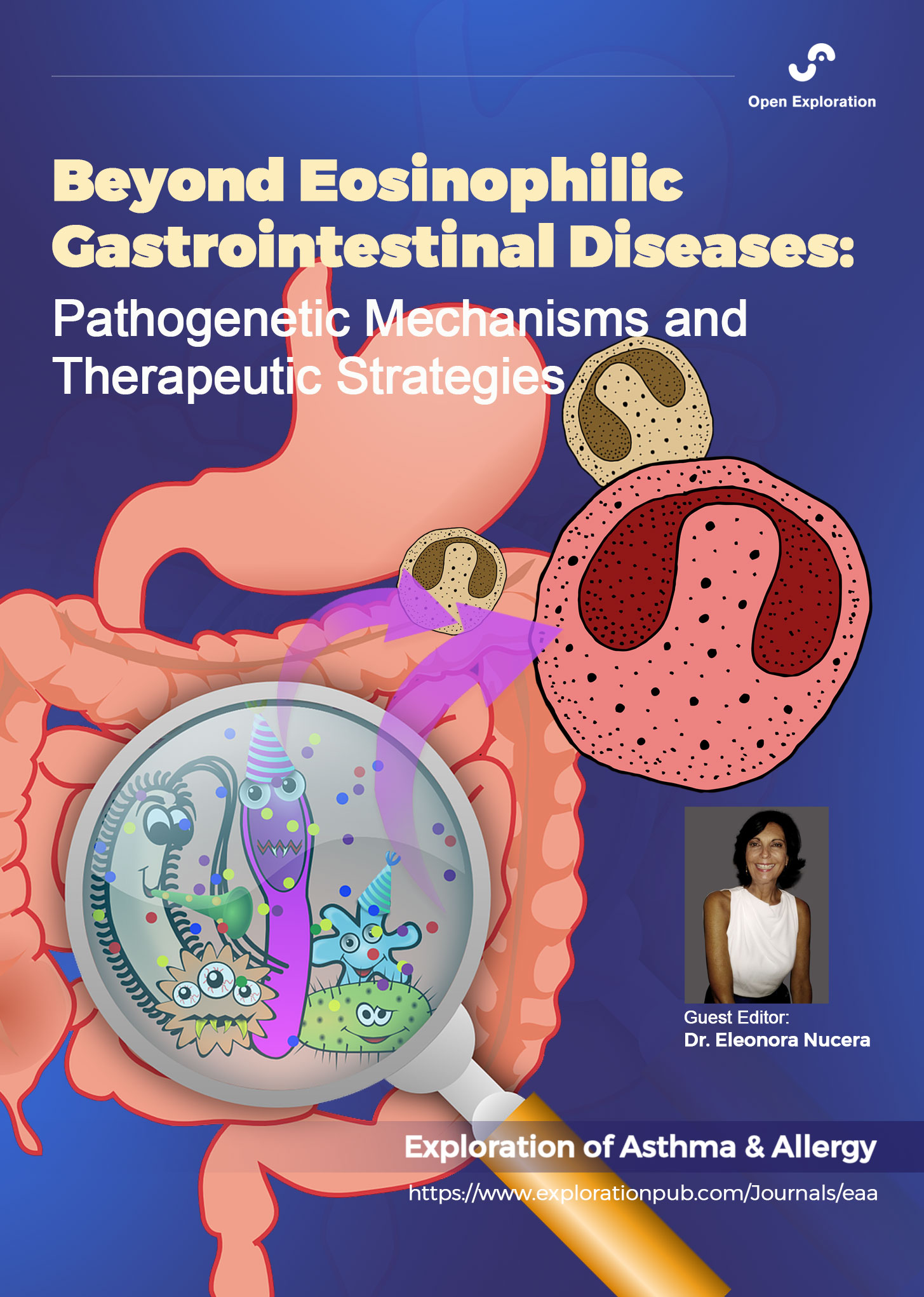
Atopic Dermatitis – Pathology and Treatment Modalities
Guest Editor: Prof. Somasundaram Arumugam
Submission Deadline: December 31, 2025
Published Articles: 5
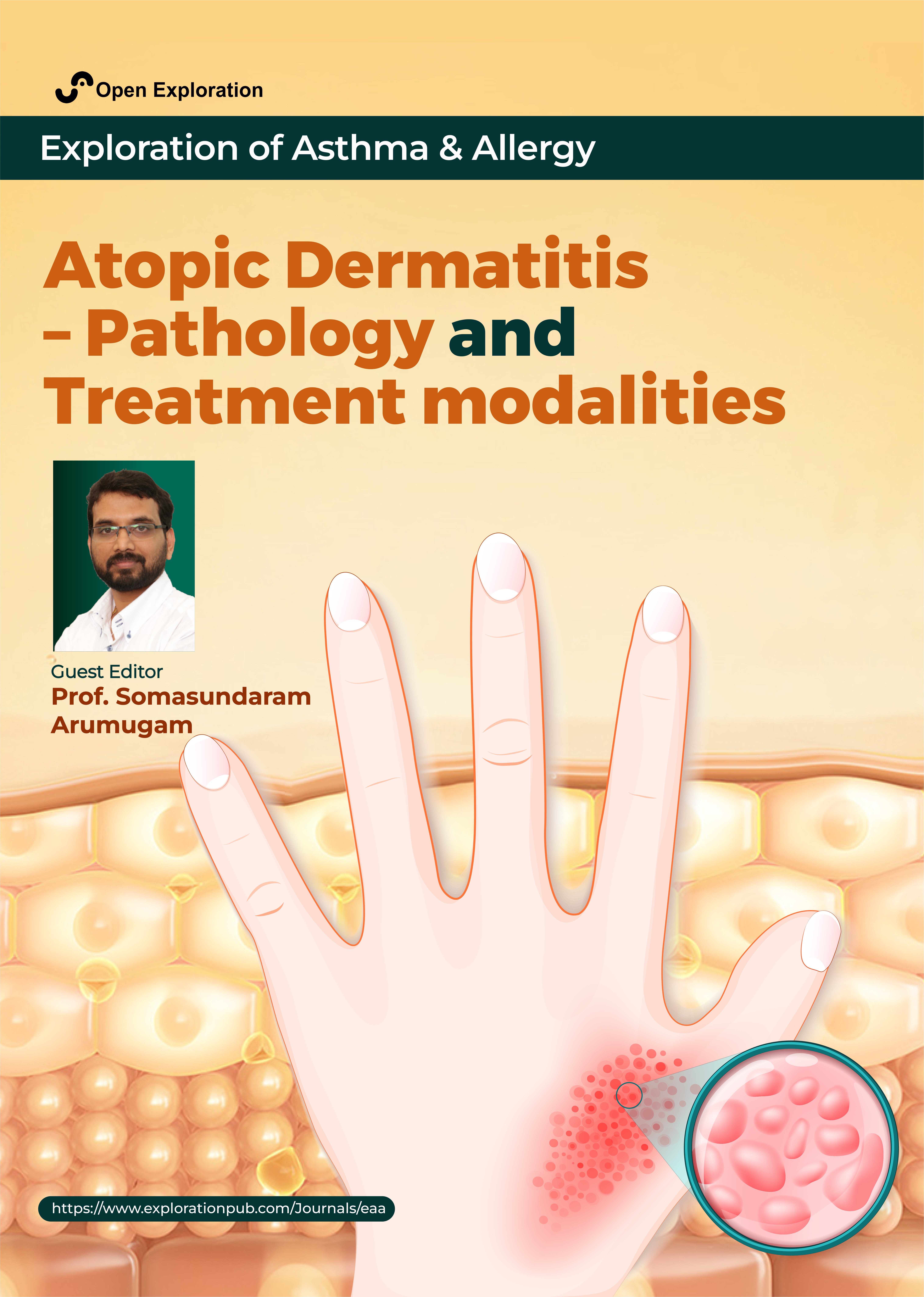
Environment, Infectious Diseases, and Allergy
Guest Editor: Prof. Vincenzo Patella
Submission Deadline: December 31, 2025
Published Articles: 1
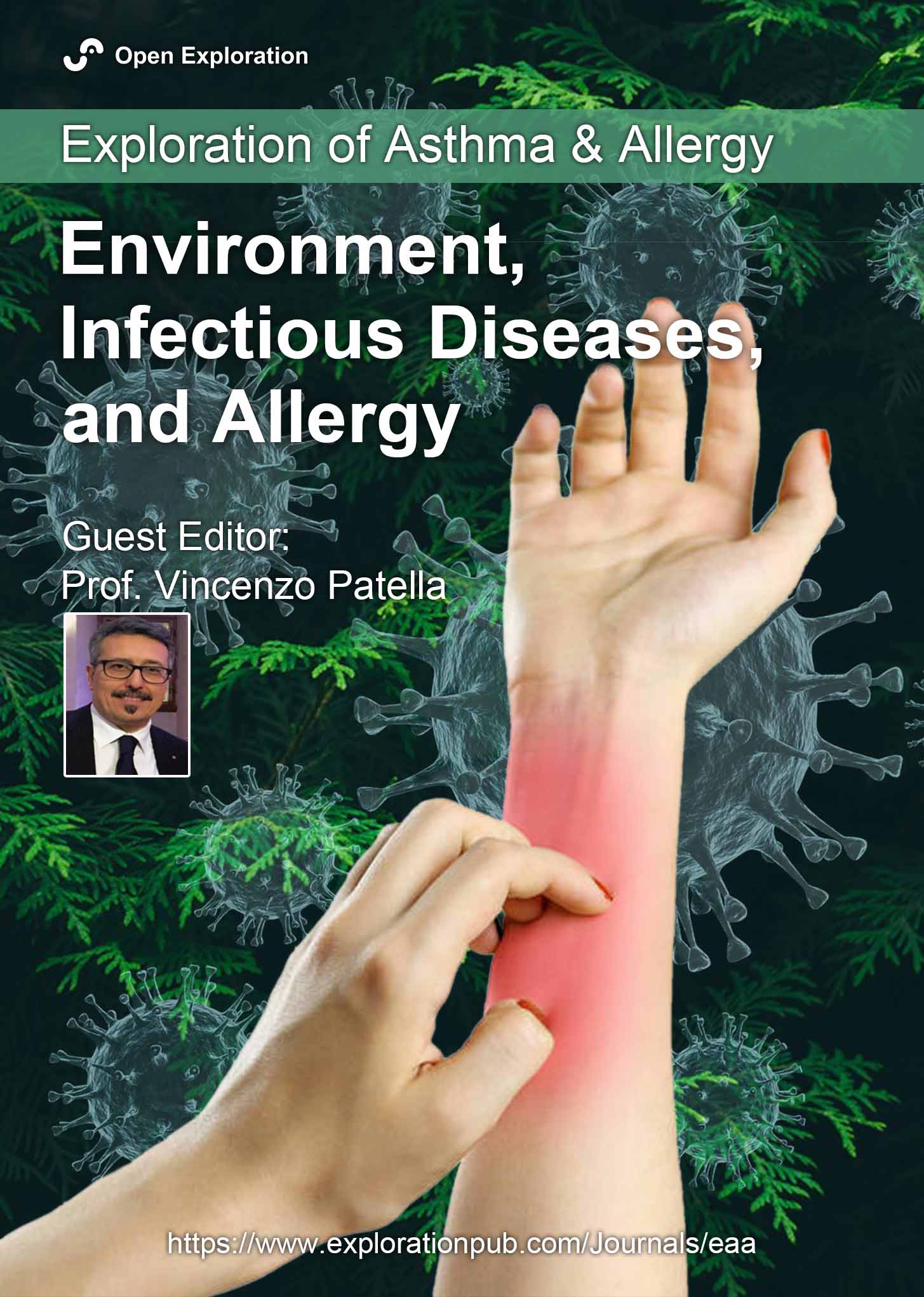
Innate Immune Mechanisms in Allergic Diseases
Guest Editors: Prof. Uday Kishore; Dr. Ahmad Al Aiyan; Dr. Ann Mary Joseph
Submission Deadline: December 31, 2025
Published Articles: 1
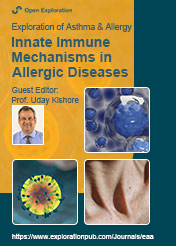
Airway Epithelial Cells in Asthma
Guest Editor: Prof. Garry M. Walsh
Submission Deadline: December 31, 2025
Published Articles: 1
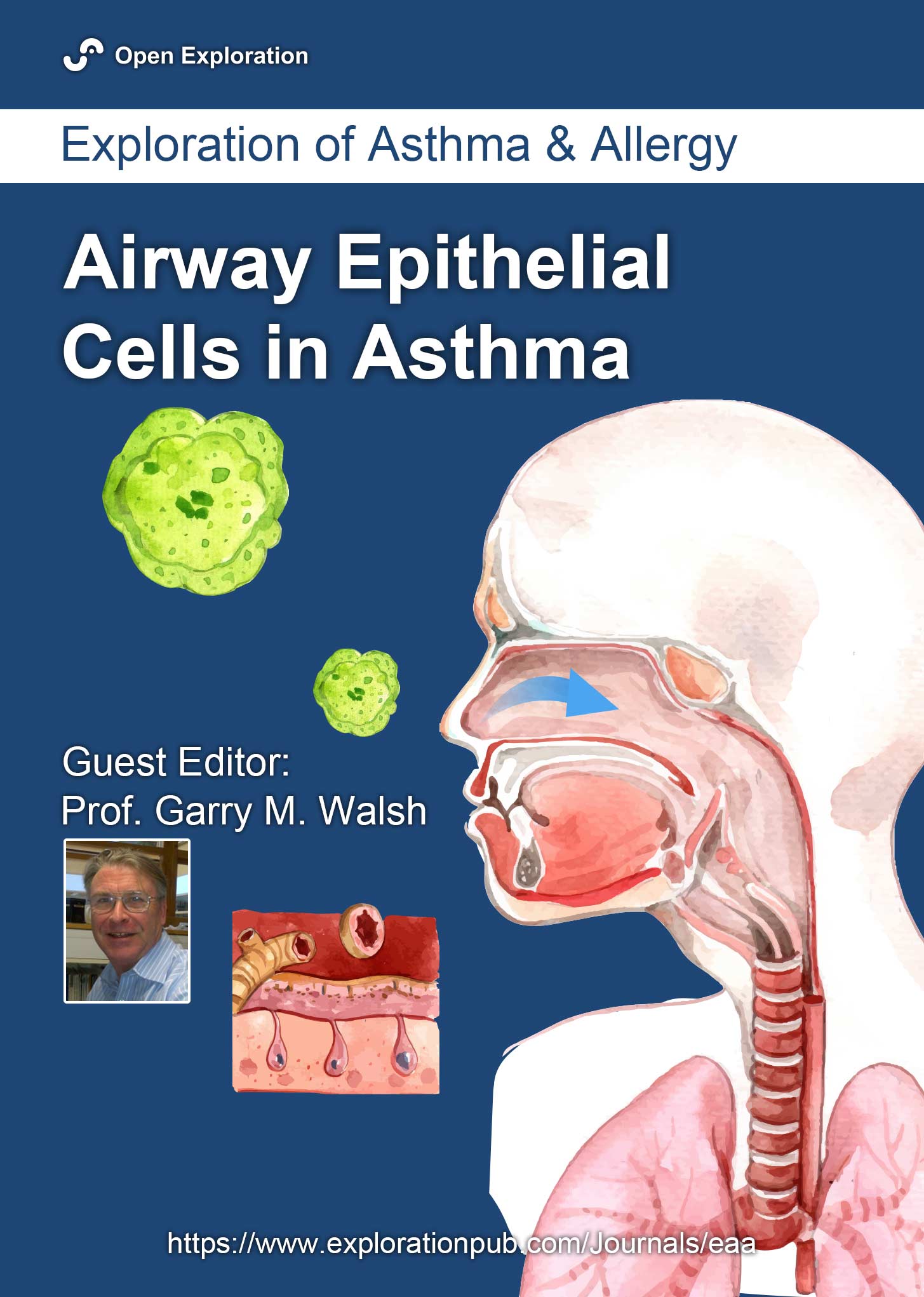
Update on Chronic Rhinosinusitis
Guest Editor: Prof. Ludger Klimek
Submission Deadline: December 31, 2025
Published Articles: 5
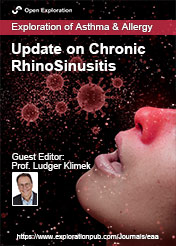
Asthma and its Relationship with Psychological and Psychopathological Factors
Guest Editor: Prof. Pasquale Caponnetto
Submission Deadline: December 31, 2025
Published Articles: 5
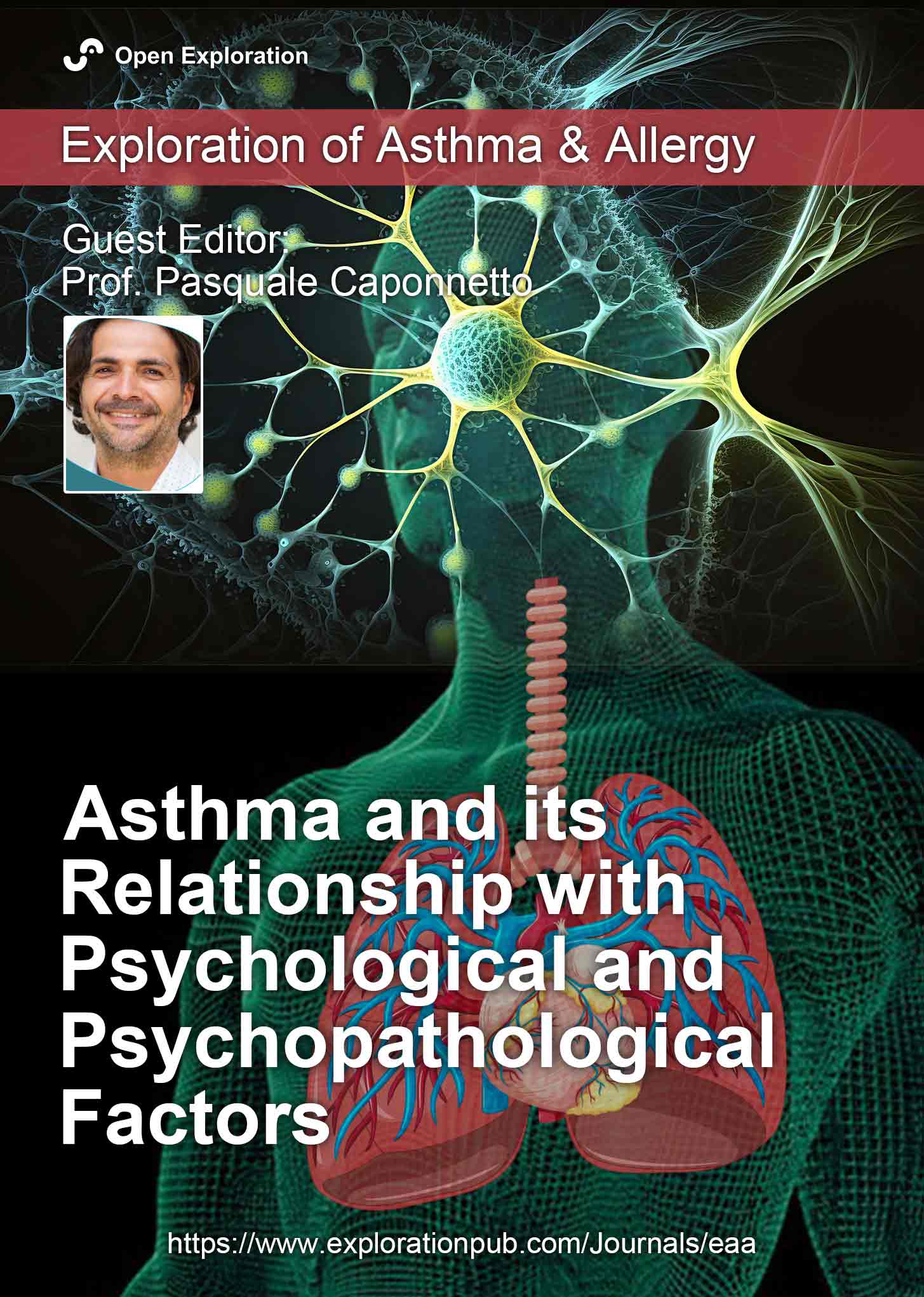
The Era of Biologics in Allergy
Guest Editor: Prof. Giovanni Paoletti
Submission Deadline: December 31, 2025
Published Articles: 10
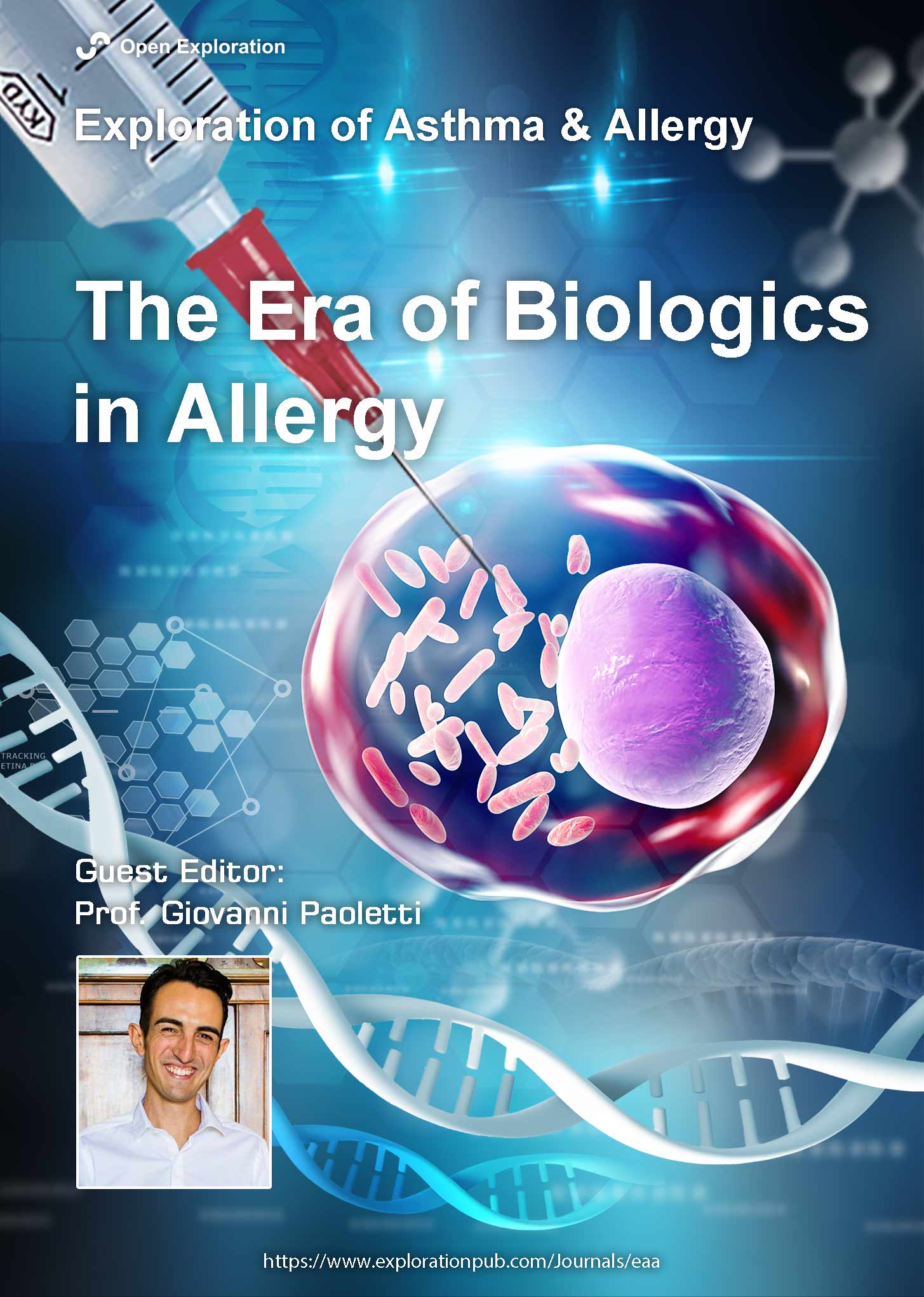
Journal Information
Journal Indexing
Journal Metrics





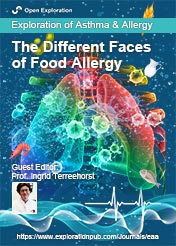
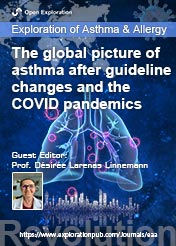
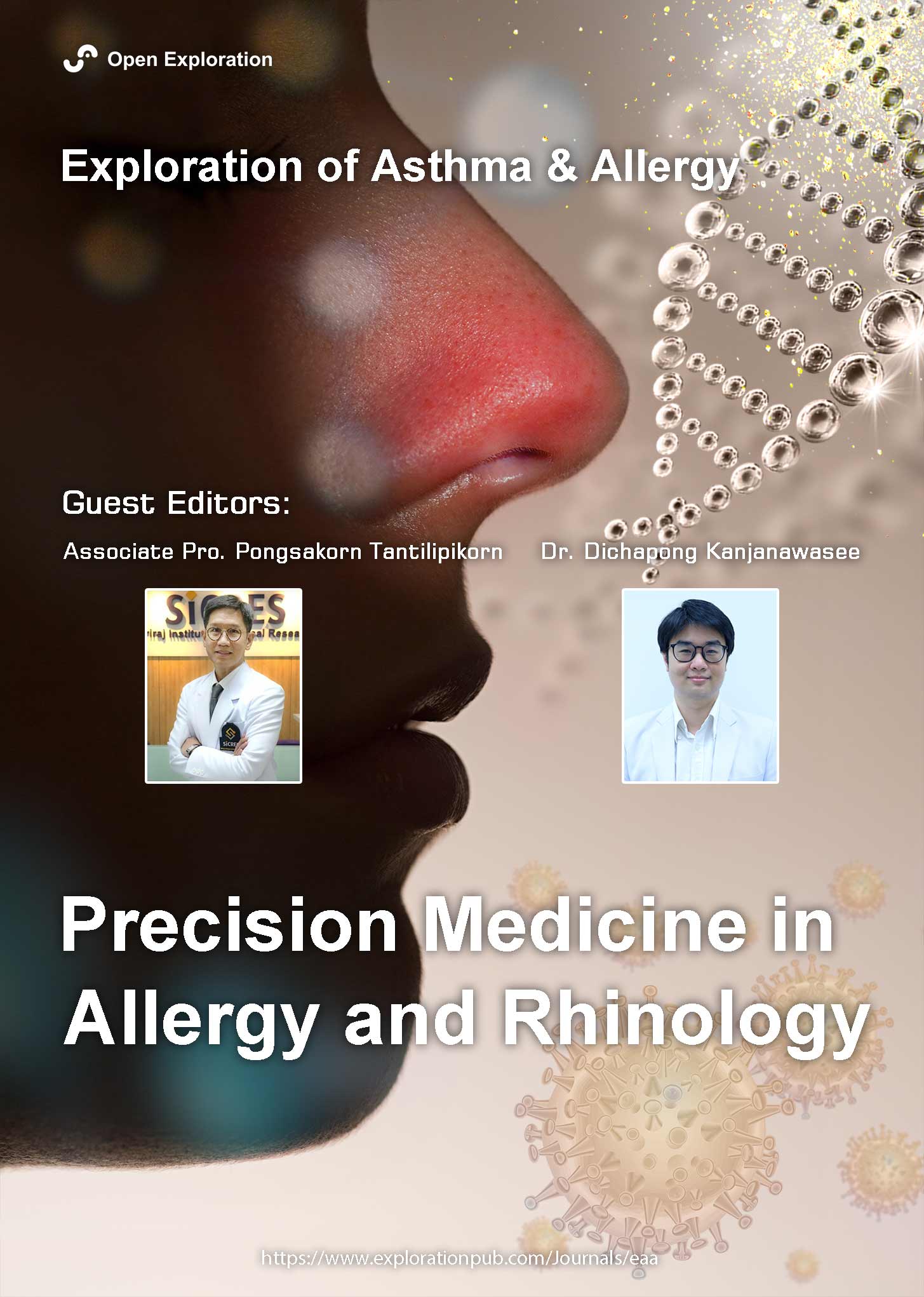








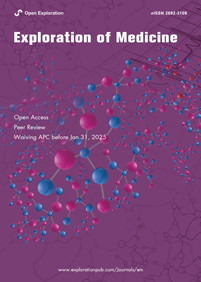
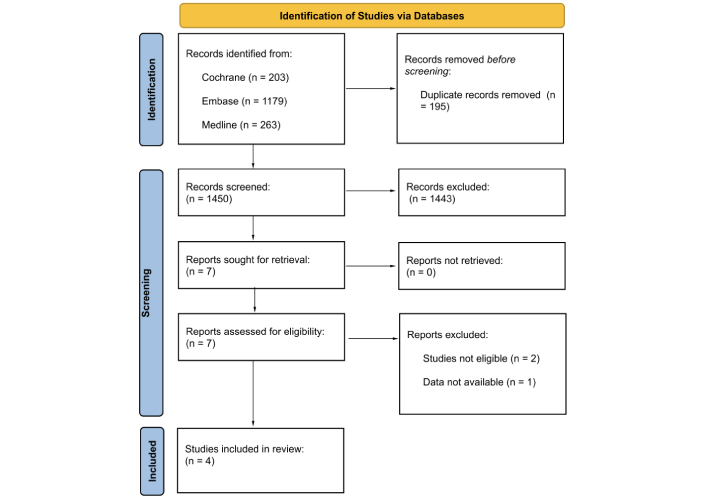 Title: Unravelling the interplaybetween #Harmattan wind andbaroreflex functions: implicationon environmental health andcardiovascular #pathophys
Title: Unravelling the interplaybetween #Harmattan wind andbaroreflex functions: implicationon environmental health andcardiovascular #pathophys


